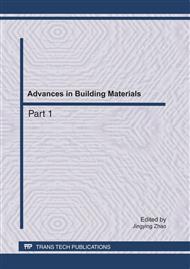p.1738
p.1743
p.1749
p.1755
p.1760
p.1767
p.1773
p.1778
p.1784
The Influence of Water Content on the Parameters of Geogrid-Soil Interface
Abstract:
The method of evaluating the effect of geogrid reinforcement mainly is the finite element method at present. The interface between geogrid and soil is set to contacting element normally. The tangential stiffness expression has five parameters totally. The interaction characteristics of geosynthetics and filled soil are related to the soil type and water content. We designed the experimental research program, using direct shear friction test, study the five parameters of the interface between geogrid and soil varied with water content and soil type. The experimental results show that: Whether weathered sands or silty clay, the value of the parameters (k1,n,c,φ) increase with the increase of water content, when reaching the peak point, then the value of the parameters (k1,n,c,φ) will decreases with the increase of water content. The water content corresponding to the peak is near the optimum water content. The value of the parameters (Rf) decreases with the increase of water content, when reaching a minimum, the value of the parameters (Rf) will increase with the increase of water content. The water content corresponding to the minimum also is near the optimum water content. The research results can provide reliable basis for the selection of evaluation parameters.
Info:
Periodical:
Pages:
1760-1766
Citation:
Online since:
May 2011
Authors:
Price:
Сopyright:
© 2011 Trans Tech Publications Ltd. All Rights Reserved
Share:
Citation:


